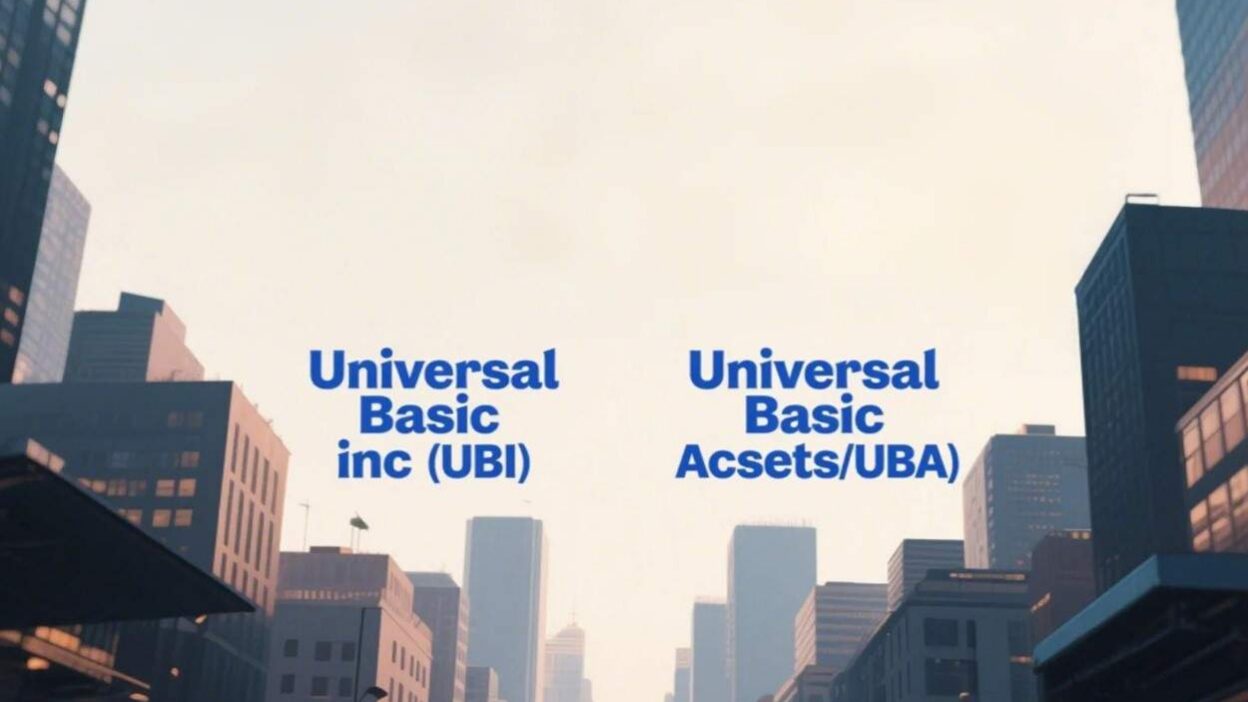The Quest for Economic Security in a Divided World
In an era of soaring inequality, two concepts have emerged as potential game-changers: Universal Basic Income (UBI) and Universal Basic Assets (UBA). Both aim to reduce poverty and level the playing field, but they approach the problem from distinct angles. UBI focuses on cash transfers, while UBA centers on universal access to essential resources. As debates over economic policy intensify, understanding the differences—and synergies—between these models is critical. This article breaks down what UBI and UBA are, how they work, and their potential to reshape societal well-being.
What Is Universal Basic Income (UBI)?
UBI is a straightforward yet revolutionary idea: every citizen (or resident) receives a regular, unconditional cash payment, regardless of income, employment status, or wealth. The goal is to provide a financial floor, empowering individuals to meet basic needs, pursue opportunities, and navigate life’s uncertainties.
Key Features of UBI
- Unconditional: No means-testing or work requirements. Everyone qualifies.
- Regular: Paid monthly, quarterly, or annually (e.g., $1,000/month in some proposals).
- Universal: Covers all residents, not just the poor.
Examples of UBI in Action
- Finland’s UBI Experiment (2017–2018): 2,000 unemployed Finns received €560/month. Results showed reduced stress, improved mental health, and a 20% increase in employment for some recipients.
- Stockton, California (2019–2021): A $500/month UBI pilot for 125 low-income residents cut food insecurity by 45% and increased full-time employment by 28%.
- Alaska’s Permanent Fund Dividend: While not a full UBI, Alaska has distributed annual oil revenue checks (averaging 2,000) to residents since 1982, demonstrating broad public support for unconditional cash.
What Is Universal Basic Assets (UBA)?
UBA takes a broader view of “economic security” by ensuring universal access to essential assets—resources that enable participation in society and long-term stability. These assets can be tangible (housing, healthcare) or intangible (education, digital connectivity). Unlike UBI, UBA focuses on equitable access rather than direct cash.
Key Features of UBA
- Asset-Based: Provides access to critical resources, not just money.
- Targeted: Focuses on needs like shelter, healthcare, or education (not unconditional for all).
- Sustainable: Aims to address root causes of inequality (e.g., lack of housing or healthcare).
Examples of UBA in Practice
- Universal Healthcare: Countries like Canada and the UK provide tax-funded healthcare to all residents, ensuring access to medical care regardless of income.
- Social Housing Programs: Nations like Singapore (with 80% public housing) and Germany (with rent-controlled public housing) guarantee affordable shelter for citizens.
- Digital Inclusion: Initiatives like Finland’s “Every Child a Laptop” program or India’s “Digital India” campaign provide free or subsidized internet and devices to bridge the digital divide.
UBI vs. UBA: Key Differences
| Aspect | Universal Basic Income (UBI) | Universal Basic Assets (UBA) |
|---|---|---|
| Core Focus | Cash for daily needs (food, rent, utilities). | Access to resources (housing, healthcare, education). |
| Distribution | Direct, unconditional payments. | Indirect, via subsidized services or resource access. |
| Funding | Tax revenue, resource dividends, or sovereign wealth funds. | Taxes, public-private partnerships, or dedicated levies. |
| Impact Timeline | Immediate (cash in hand). | Long-term (e.g., education improves earning potential). |
| Policy Complexity | Simple to administer (one payment system). | Complex (requires infrastructure, eligibility rules). |
Pros and Cons: Weighing the Trade-Offs
UBI: The Case for Cash
- Pros:
- Simplicity: Easy to implement and administer (no bureaucracy).
- Empowerment: Recipients choose how to spend funds (e.g., education, entrepreneurship).
- Poverty Alleviation: Studies show UBI reduces food insecurity and stress.
- Cons:
- Cost: Large-scale UBI (e.g., $1,000/month for 330 million Americans) would require trillions in funding.
- Work Disincentives: Critics argue it may reduce labor participation (though pilot data shows mixed results).
- Inflation Risk: Sudden cash infusions could drive up prices for essentials.
UBA: The Case for Assets
- Pros:
- Root Cause Solutions: Addresses systemic gaps (e.g., lack of housing or healthcare).
- Multiplier Effects: Education or job training boosts long-term earnings, reducing reliance on aid.
- Sustainability: Assets (like a home or skills) appreciate over time, fostering resilience.
- Cons:
- Complexity: Requires infrastructure (e.g., building public housing, expanding broadband).
- Eligibility Debates: Who qualifies? (e.g., should UBA cover only citizens or all residents?).
- Delayed Impact: Benefits take years to materialize (e.g., a child educated today enters the workforce in 15 years).
Real-World Experiments: What Have We Learned?
- UBI: Finland’s experiment showed UBI improved well-being but didn’t drastically boost employment. Stockton’s trial highlighted UBI’s role in reducing financial precarity, with recipients reporting greater hope and agency.
- UBA: Canada’s universal healthcare system correlates with lower poverty rates and longer life expectancies. Singapore’s public housing program has reduced homelessness to near-zero, demonstrating UBA’s power to transform lives.
The Future: Can UBI and UBA Coexist?
Many experts argue that UBI and UBA are not mutually exclusive. A hybrid model—combining unconditional cash with targeted asset access—could address both immediate needs and systemic inequities. For example:
- A UBI floor ($1,000/month) ensures basic survival.
- UBA programs (universal childcare, affordable broadband) tackle barriers to upward mobility.
Toward a More Equitable Future
UBI and UBA represent two paths to economic justice—UBI through cash, UBA through assets. While UBI offers immediate relief, UBA addresses the root causes of inequality. As societies grapple with poverty, inflation, and technological disruption, the debate between these models will only intensify.
The key question isn’t “Which is better?” but “How can we design policies that leverage the strengths of both?” By combining UBI’s simplicity with UBA’s long-term impact, we can build a world where everyone has the resources to thrive.



